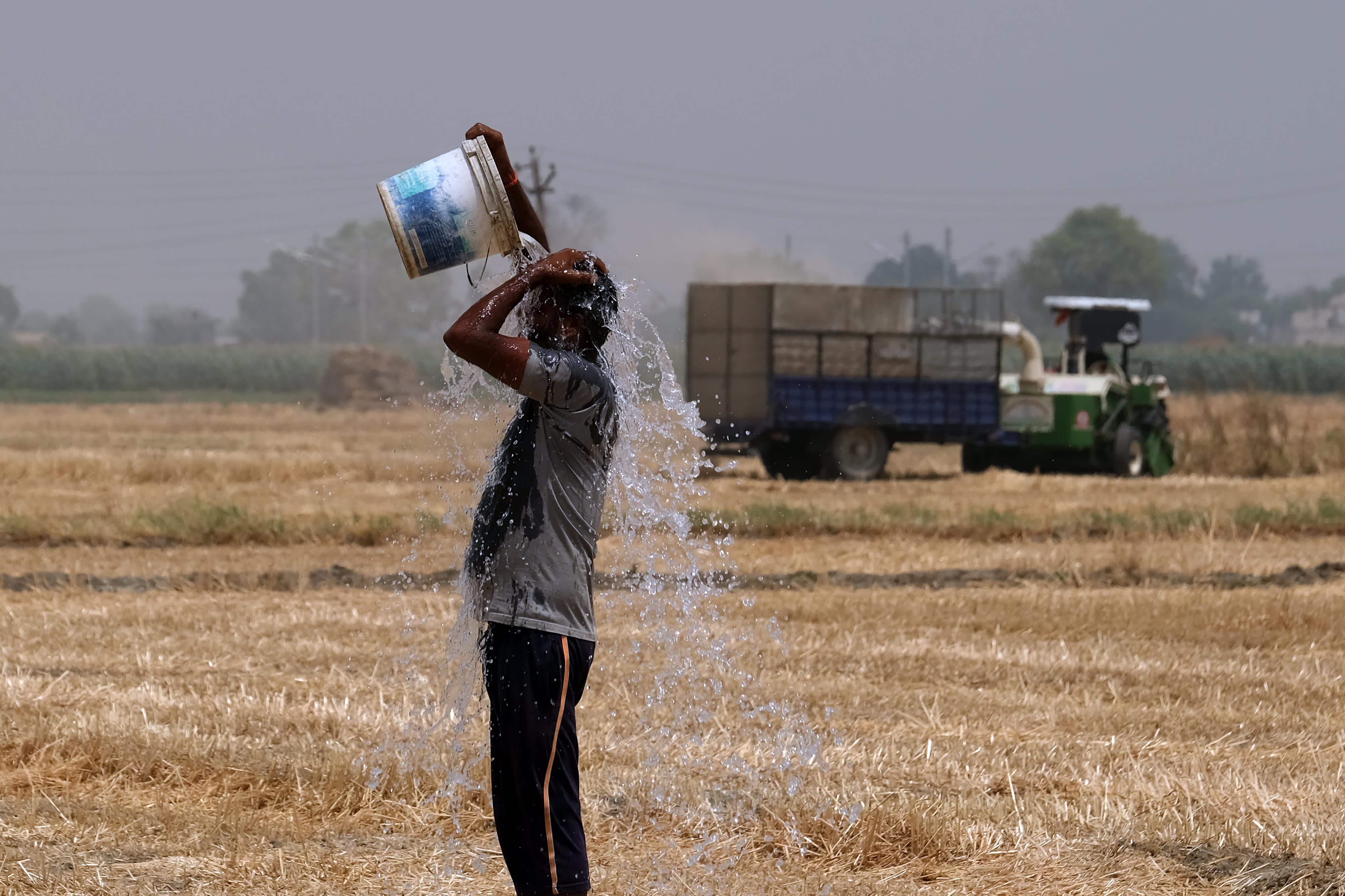
People outside holding an umbrella during hot summer day in Kolkata, West Bengal, India on April 26. The temperature in Kolkata was around 40°c.
Pacific Press | Lightrocket | Getty Images
India has been suffering under record-breaking heat for the last couple months.
Last month was the third-hottest April the country has seen over the past 122 years, from 1901 to 2022, according to government officials.
The average maximum temperature was 35.30 degrees Celsius (95.5 degrees Fahrenheit), coming in just behind 35.42 degrees Celsius (95.8 degrees Fahrenheit) in 2010 and 35.32 degrees Celsius (95.6 degrees Fahrenheit) in 2016, the Indian government said in a statement on Monday. That’s more than a degree hotter than the average max temperature in April between the years 1981 and 2010, which was 33.94 degrees Celsius (93.1 degrees Fahrenheit).
Air-coolers for sale in New Delhi, India, on Saturday, April 30, 2022. India is experiencing a heat wave, with the countrys average temperature reaching almost 92 degrees Fahrenheit (33 degrees Celsius) in March, the highest on record for the month since authorities started collecting the data in 1901.
Anindito Mukherjee | Bloomberg | Getty Images
The average maximum temperature recorded in March was 33.10 degrees Celsius (91.6 degrees Fahrenheit), which is the highest average maximum in the past 122 years, and just a smidge higher than the previous record high recorded in March 2010. It’s almost two degrees hotter than average maximum temperature in March between the years 1981 and 2010, which was 31.24 degrees Celsius (88.2 degrees Fahrenheit).
What’s particularly notable is the early onset of the heat wave, according to Arpita Mondal, a professor of climate studies at the Indian Institute of Technology. The expected timing of a heat wave like this is May and June, Modal told CNBC. It’s also affecting a notably large geographic region, Mondal said.
Residents fill water from a Delhi Municipal Corp. truck in New Delhi, India, on Saturday, April 30, 2022.
Anindito Mukherjee | Bloomberg | Getty Images
The length and geographic size of the heat wave are what’s notable to Zachary Zobel, an assistant scientist at the Woodwell Climate Research Center. “The most shocking part for me has been the geographical extent and the duration,” Zobel told CNBC. “Yes, this heat wave occurring in April is also alarming since May and June are typically the hottest months for India, but the size and length of these heat waves are what has surprised me the most.”
Human-caused climate change is likely to make heat waves hotter, longer, and more common, according to the National Academies of Sciences, Engineering, and Medicine.
“The scientific community has overwhelming evidence that climate change is causing the distributions of temperature to shift by changing the ‘normal’ state, and shift in distributions would mean more and more chances of extremes,” Mondal told CNBC.
A farmer pours water on himself while working at a wheat farm in the Ludhiana district of Punjab, India, on Sunday, May 1, 2022.
T. Narayan | Bloomberg | Getty Images
And regions of the globe being hit by this heat wave are likely to be vulnerable to more heat waves in the future, Zobel said. “There is no question that heat waves are made worse by fossil fuels and climate change everywhere in the globe,” he told CNBC. “India and Pakistan are two of the hottest places in the world and will likely continue to see heat waves of this magnitude and worse over the next several decades.”
That said, more research is needed to fully understand the cause of and future implications of this heat wave, according to Mondal. Heat waves are often a response to multiple specific factors, including, for example, ocean events in the Pacific and Atlantic and local weather patterns resulting from dry soil because of limited rainfall, she said.
Northwest and Central India are due for thunderstorms which should being some relief from the record-setting heat wave that has been blanketing much of the country in recent months. Temperatures are expected to drop by several degrees.
A man is seen drinking water to relieve himself of summer heat , at a street side in Kolkata, India, on 29 April 2022.
Debarchan Chatterjee | Nurphoto | Getty Images
Other regions aren’t expected to see much relief in the short term. Gujarat and Maharashtra, in the western part of the country, are expected to have “no significant change” in their maximum temperatures over the next two days and then see their maximum temperatures go up by about 2 degrees Celsius (3.6 degrees Fahrenheit), the Indian meteorological department said on Monday.
A old age women puts water on his face to get relief from extreme heat during hot weather, Kolkata Maximum Temperature In Kolkata Likely To Touch 40 Degrees on April 26,2022.
Debajyoti Chakraborty | Nurphoto | Getty Images
To deal with the heat, the Indian meteorological society advised people to avoid direct heat exposure and to stay hydrated. “Drink sufficient water — even if not thirsty,” a written statement from the organization published on Sunday recommended.
“Wear lightweight, light-colored, loose, cotton clothes and cover the head by use of cloth, hat or umbrella,” the Indian government recommended.
Much of India is expected to continue to suffer under high temperatures in May, the government’s meteorological department said. “Above normal minimum temperatures are likely over most parts of northwest, central, east and northeast India,” the monthly forward-looking outlook, which was published on Saturday, says.
A man carry a pedestrial fan amid heatwave in Kolkata, India, 26 April, 2022.
Indranil Aditya | Nurphoto | Getty Images
Source: CNBC
